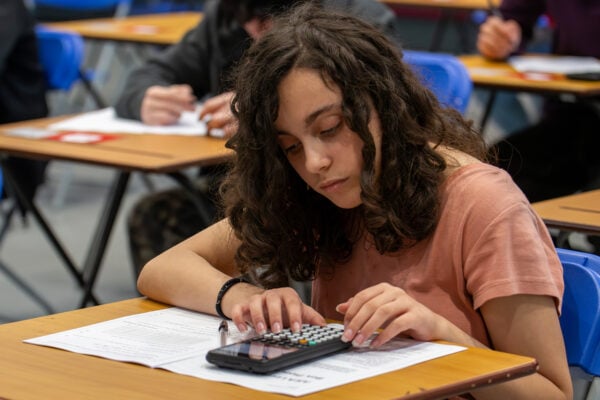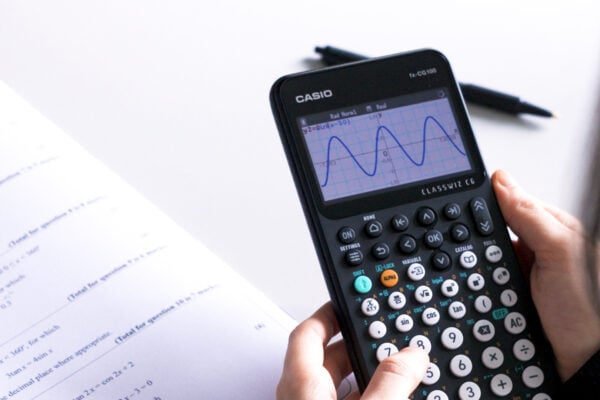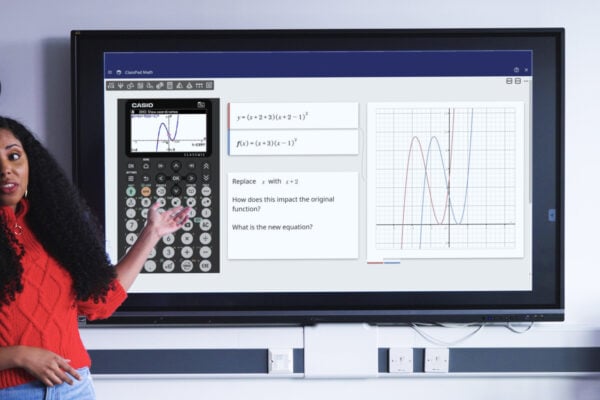GCSE to A level maths: Getting students ready

GCSE to A level maths: Getting students ready
We know that transitioning from GCSE to A level maths can be a large leap for students.
At a more advanced level it requires students to develop greater knowledge of the subject and its core principles, as well as building on problem solving skills and the conceptual thinking they’ve developed during GCSEs. We understand this can be a real challenge for students and teachers alike, particularly when it comes to calculators and how they’re used to solve more complex maths problems.
At A level, calculators will play a much bigger role in the classroom, as students require a deeper understanding of the functions and how they work to solve problems, and be confident enough to carry this understanding into exams. So we know this can put some pressure on teachers when it comes to lesson planning and figuring out where (and which) calculators fit into the curriculum.
Building on the foundations
Where you’ll start with using calculators at A level will likely be determined by the calculators students have used at GCSE. We know not all students will have worked with more advanced calculators like the fx-991CW (which can solve more complex equations) at GCSE. So for some students, the learning curve will be much steeper compared to others who’ve already had some exposure to advanced scientific or graphic calculators, and have some understanding of their functionality.
For example, if students have been using the fx-83GT CW or fx-85GT CW calculators at GCSE, they’ll have to adapt to a more advanced calculator as these models aren’t suitable for solving the kinds of problems they’ll be introduced to at A level. We also understand that in some situations you may have students who are reluctant to change the calculator they’ve been using for the last five years and already feel confident with.
In these situations we recommend starting slow and gradually introducing students to the more advanced functions. Eventually students will understand the essential functions and be confident enough to pick up the more advanced features on their own as they’re introduced to more complex problems.
Planning for both scientific and graphic calculators in the classroom
One thing we understand is that unlike at GCSE (where students will be typically introduced to one type of calculator and stick with it through to exams) there can be value to students learning how to use both scientific and graphic calculators at A level. For example starting with an advanced scientific calculator at AS, then progressing to a graphic calculator in their second year. Anecdotally we’ve heard from schools that students feel more comfortable and confident when it comes to exam times if they’re able to switch between the two calculators depending on the question they’re facing.
Obviously from a teaching perspective we know this can present a challenge in teaching students the functionality of an advanced scientific calculator, and then ensuring they don’t forget how that calculator works when they’re learning to use a graphic calculator later on. What we’d recommend is to use the calculators whenever you think it’s appropriate and, once students have a grasp on the basic functionality of the calculator, continue to feed them maths problems that make them think about the problem and figure out the functionality they need to solve it.
We tend to find that using this method, students are able to link the maths concepts they’re learning to the functions of the calculator they’re using and become more confident and capable of using either type of calculator to problem solve, or validate their thinking. This is particularly true with graphic calculators, where we often find students will become more diligent in checking the inputs they’re making on the calculator when solving problems involving linked concepts, and use the calculator to interrogate a problem, rather than simply following the functions and assuming the answer they produce is correct.
One benefit we see in teaching students to use a scientific and graphic calculator is how they think about a maths problem and figure out the best way to solve it and interpret the information they get from their calculator.
Re-thinking the teacher role
One thing we’d always encourage teachers to do is reframe how they think about teaching with calculators in the classroom.
We’ve heard from schools in the past how some teachers lack the confidence to teach students every function on a calculator, and how this can become worse when teaching two types of calculators. We understand why some teachers might feel like this and why, as a result, they could become too fixated focusing on the functionality of a calculator, rather than the maths subject.
We’d encourage you to remember though, students and young people are far more intuitive when it comes to learning technology. Once they understand the fundamentals of a graphic or scientific calculator, they’ll naturally be able to work out how the other functions are used once they’re presented with maths problems.
Let them discover the tech while you focus on the maths – a perfect partnership. We also have resources for both teaching ideas and calculator skills. While learning how to use a calculator is important, and students will need to be proficient when it comes to exams, we always encourage that calculators are seen as a supporting tool, rather than the central focus of lessons. An easy way to teach these basic concepts, is to a use an emulator, which allows you to project the calculator onto a whiteboard at the front of the class, so you can demonstrate functions to the entire class, rather than trying to do it individually.
It can also speed up the learning process and give you more time to spend teaching maths as you can run through a single student’s question with everyone, ensuring all students have a clear understanding of how the calculator works.
Improving student outcomes
A level maths is a complex subject that provides a real challenge to students, not only when it comes to the concepts of the subject, but the technology and use of graphic calculators. As teachers, you’re not alone in helping students get to grips with technology and become confident enough to take what they’ve learned into exams and potentially onto higher education.
Casio provides free skills training sessions to help teachers build confidence using graphic calculators in the classroom.
Sign up for your free session here.



